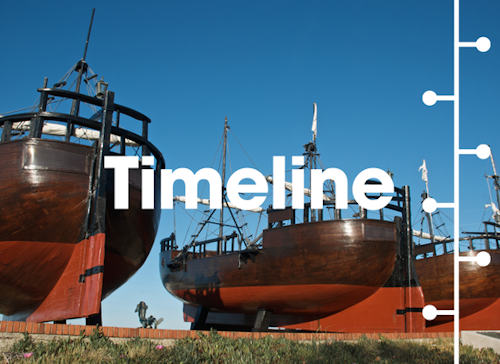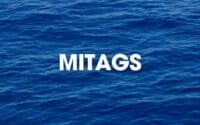The Amazing Evolution of Commercial Ship Navigation

Commercial ship navigation has evolved dramatically over the centuries, transitioning from basic celestial navigation to sophisticated autonomous systems. ShipUniverse explores the major milestones in navigation technology from the 1200s to the 2020s, showcasing how advancements have continually enhanced the safety, efficiency, and precision of maritime operations. Dive into our timeline to see how each era’s innovations shaped the modern navigation systems that guide today’s vessels across the world’s oceans.
| ShipUniverse: Evolution of Commercial Ship Navigation: 1200-2020 | ||||
|---|---|---|---|---|
| Decade | Primary Navigation Systems | Key Technologies | Advantages | Limitations |
| 1200s |
|
|
|
|
| 1300s |
|
|
|
|
| 1400s |
|
|
|
|
| 1500s |
|
|
|
|
| 1600s |
|
|
|
|
| 1700s |
|
|
|
|
| 1800s |
|
|
|
|
| 1820s |
|
|
|
|
| 1840s |
|
|
|
|
| 1860s |
|
|
|
|
| 1880s |
|
|
|
|
| 1900s |
|
|
|
|
| 1920s |
|
|
|
|
| 1940s |
|
|
|
|
| 1960s |
|
|
|
|
| 1980s |
|
|
|
|
| 2000s |
|
|
|
|
| 2020s |
|
|
|
|
Detailed Overview by Decade
1200s
Primary Navigation Systems: Astrolabe and Cross-staff.
Key Technologies: Celestial Navigation.
Advantages: Enabled basic oceanic navigation by using celestial bodies for positioning.
Limitations: Limited accuracy and dependent on clear skies; prone to human error in manual measurements.
1300s
Primary Navigation Systems: Astrolabe and Cross-staff.
Key Technologies: Early use of Portolan charts.
Advantages: Improved coastal navigation by providing detailed port-to-port routes.
Limitations: Less effective for open ocean navigation due to limited scope and accuracy.
1400s
Primary Navigation Systems: Mariner's Astrolabe and Quadrant.
Key Technologies: Introduction of Compass.
Advantages: Enhanced direction finding and more reliable navigation.
Limitations: Magnetic deviations affected compass accuracy, and celestial navigation still depended on clear skies.
1500s
Primary Navigation Systems: Mariner's Astrolabe and Cross-staff.
Key Technologies: Refinement of Compass and Nautical Charts.
Advantages: More reliable navigation with improved charts and direction finding.
Limitations: Dependent on clear skies for celestial observations and manual charting.
1600s
Primary Navigation Systems: Cross-staff and Backstaff.
Key Technologies: Advances in determining longitude.
Advantages: Improved positional accuracy through better methods for longitude calculation.
Limitations: Procedures remained complex and time-consuming.
1700s
Primary Navigation Systems: Octant and Sextant.
Key Technologies: Harrison's Chronometer.
Advantages: Accurate determination of longitude revolutionized oceanic navigation.
Limitations: Instruments were expensive, delicate, and required careful maintenance.
1800s
Primary Navigation Systems: Sextant and Chronometer.
Key Technologies: Celestial Navigation and Dead Reckoning.
Advantages: Enabled accurate oceanic voyages and determination of longitude.
Limitations: Dependent on clear skies for celestial observations, and manual calculations were prone to human error.
1820s
Primary Navigation Systems: Sextant and Chronometer.
Key Technologies: Improved Celestial Navigation techniques.
Advantages: Enhanced positioning accuracy with better celestial calculations.
Limitations: Still complex and susceptible to errors in manual handling.
1840s
Primary Navigation Systems: Sextant and Chronometer.
Key Technologies: Nautical Almanacs.
Advantages: Provided reference data for easier celestial navigation.
Limitations: Continued reliance on manual calculations and clear skies.
1860s
Primary Navigation Systems: Magnetic Compass and Sextant.
Key Technologies: Mechanical Chronometers.
Advantages: Reliable directional finding and improved timekeeping.
Limitations: Magnetic compass was susceptible to deviations.
1880s
Primary Navigation Systems: Magnetic Compass, Sextant, and Early Sounding Lines.
Key Technologies: Echo Sounders (early forms).
Advantages: Provided basic depth measurements, aiding in navigation.
Limitations: Limited range and accuracy of early echo sounders.
1900s
Primary Navigation Systems: Magnetic Compass, Sextant, and Sounding Lines.
Key Technologies: Early Gyrocompass.
Advantages: Improved directional stability not affected by magnetic fields.
Limitations: Mechanical complexity required regular maintenance.
1920s
Primary Navigation Systems: Magnetic Compass, Sextant, and Sounding Lines.
Key Technologies: Radio Direction Finding (RDF).
Advantages: Enhanced position finding using radio signals, aiding in coastal navigation.
Limitations: Limited range and subject to radio signal interference.
1940s
Primary Navigation Systems: Magnetic Compass, Gyrocompass, and RDF.
Key Technologies: Radar and LORAN (Long Range Navigation).
Advantages: Enhanced situational awareness and long-range navigation capabilities.
Limitations: Radar had range limitations, and LORAN’s coverage had gaps.
1960s
Primary Navigation Systems: Gyrocompass, Radar, and LORAN.
Key Technologies: Early Electronic Navigation Aids and VHF Radios.
Advantages: Improved coastal navigation and communication capabilities.
Limitations: Limited to coastal areas, and high initial costs for equipment.
1980s
Primary Navigation Systems: Gyrocompass, Radar, and Decca Navigator System.
Key Technologies: Loran-C and Early GPS Systems.
Advantages: Improved positional accuracy using satellite data and Loran-C for long-range navigation.
Limitations: Dependency on satellite signals and initial system complexity.
2000s
Primary Navigation Systems: Integrated Bridge Systems (IBS) and GPS.
Key Technologies: Enhanced GPS, ECDIS (Electronic Chart Display and Information System), and ARPA (Automatic Radar Plotting Aids).
Advantages: High integration of systems for digital charting and automated radar plotting.
Limitations: Increased complexity and high implementation costs.
2020s
Primary Navigation Systems: e-Navigation and Autonomous Navigation Systems.
Key Technologies: Advanced GPS/GNSS, AI & Machine Learning, and IoT.
Advantages: High automation with real-time data integration for enhanced safety and efficiency.
Limitations: Cybersecurity risks and high initial investment for new technology.

Do you have a Maritime Product or Service that may be of interest to Shipowners? Tell us about it here!
Do you have feedback or insights? Please reach out to editor @ shipuniverse.com

